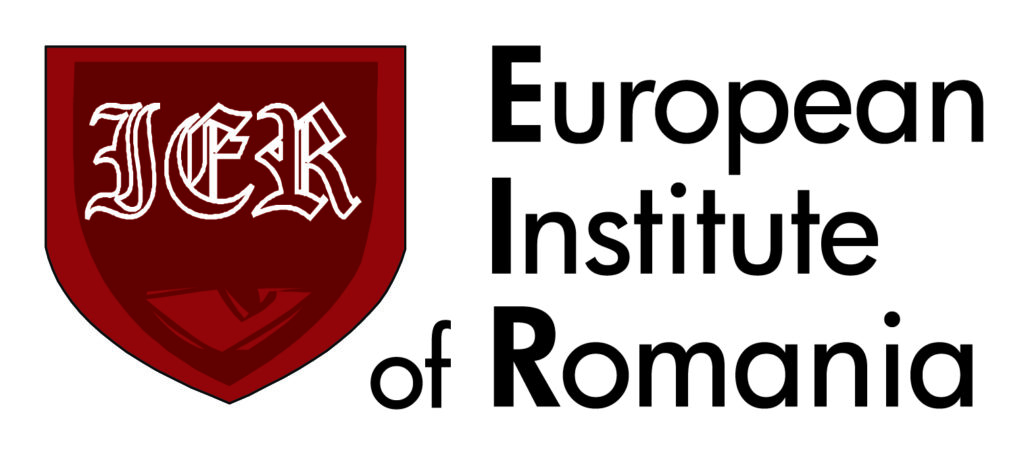Authors: Alan Lis, dr Aleksander Olech
Introduction
The threat of terrorist attacks in the Sahel has been constantly rising since 2015. The two biggest organizations, together with their associated cells, have especially marked their presence in the region: Al-Qaeda (AQ) and Islamic State (ISIS).[1] Their military capabilities are great enough for the groups to fight regularly with state governments, state coalitions, and international organizations. These destructive terrorist operations result in regular attacks, during which civilians die, and thousands of people become forcefully displaced. Moreover, terrorist groups will aim to pursue their interests of conquering other territories, increase their finances, and influencing the state through their involvement in East and Central Africa.
The Sahel (Arabic Sāḥil) is a semidesert region of West and North-Central Africa, stretching from Senegal eastward to Sudan, through Mauritania, Mali, Burkina Faso, Niger, Nigeria, Chad, and Sudan up to Eritrea on the Red Sea coast. Whereas Burkina Faso, Chad, Mali, Mauritania, and Niger are G5 countries. However, it should be emphasized that Mauritania is the only G5 country, which is not in a state of war with the terrorists. This is due to its long geographical distance from Al-Qaeda and Islamic State members’ operating territories, efficient actions of security services in the country, and a permanent defense of its border with Mali.
In 2020, in the Sahel region (especially in Mali, Burkina Faso, and western Niger), 1170 attacks of terrorism were observed. That makes a 44% increase in comparison with the previous year and maintains a continued increase of violence with the participation of Islamic groups in this region since 2015. As a result of the attacks, 4122 people died. The death rate in 2020 was 57% higher than in the previous year, which highlights the growing brutality of the jihadist groups. What is more, violence in the Sahelian region has caused a displacement of approximately 1,7 million people, and more than 3 million have experienced food shortages, mainly in Mali and Burkina Faso.[2]
It is worth mentioning that the cells of the Islamic State and Al-Qaeda are fighting each other for influence, and there is friction between them. That causes changes within the occupied territories, demising particular groups, creating new structures, and conversions of the manner and direction of conducting conflicts. Although the Islamic State is known for its combat abilities, Al-Qaeda is in a far better situation, as it outnumbers ISIS and maintains its influence in the region of the River Nile delta.[3]
Al-Qaeda
Al-Qaeda’s military divisions pose a growing threat to West African countries. The group maintains a continuous presence in Mali, where the effectiveness of the French anti-terrorist mission is decreasing. Salafi-jihadist militants currently expand their operations from Mali to neighboring countries, including Burkina Faso, Niger, Cote d’Ivoire, Benin, and Senegal. Moreover, militants linked to Al-Qaeda will be deciding to launch attacks in western Africa to stop the development of anti-terrorist missions, and simultaneously achieving the overall objective of gaining domination of the coast.
Several dozen groups having connections with Al-Qaeda operates at present in the Sahel Region. The biggest are:[4]
– Al-Qaeda in the Islamic Maghreb (AQIM),
– Jama’at Nusrat al Islam wal Muslimin (JNIM),
– Macina Liberation Front (FLM),
– Ansar Dine,
– Ansaroul Islam,
– Al-Shabaab,
– Al Muhajiroun,
– Al Hijra (wcześniej: Muslim Youth Center).
Jihadist groups have rapidly spread in the Sahel, taking advantage of its ethnic differences, political weakness, corruption, human rights-abusing, and internal conflicts. The divisions of Al-Qaeda have been continuing southward, expanding across Burkina Faso. Terrorist organizations aim to maintain their presence in the Sahel and to increase their involvement in West Africa where, as they gradually gain the advantage, they will be able to direct their terrorist groups towards the next countries. Thus, the subsequent actions of this terrorist organization should be followed closely. According to the French security service, Al-Qaeda is currently working on a territorial expansion plan towards the Gulf of Guinea, particularly Cote d’Ivoire and Benin.[5] Operating inside those politically unstable countries may enable terrorists to influence the internal situation and to conquer territories gradually. Additionally, operating in the Gulf would allow the organization to enhance its involvement with weapon and drug trafficking, as well as kidnapping for ransom, which would translate into significant financial benefits.
Al-Qaeda’s divisions are currently preparing attacks in Senegal and other coastal countries of western Africa. Al-Qaeda in Islamic Maghreb has established a base in Mali, which enables the organization to have an impact on the neighboring countries, not only Burkina Faso, but also Cote d’Ivoire and currently Senegal. JNIM expansion in western Africa should also be highlighted. Since 2020, it has posed the main threat to Senegal’s safety, targetting its economic interests, e.g. occupying areas near the gold mine. Moreover, maintaining the presence of terrorists off the Atlantic coast and into western Africa creates opportunities for JNIM to realize its quasi-foreign policy by controlling trading routes and having access to transport and communication lines. That directly threatens the interests of the United States and Europe. In addition to the above, moving along the Mali-Senegal border (which is not a part of the G5 group) allows the creation of a terrorist support buffer in both countries, subject to the activities realized by the anti-terrorist coalition commanded by France.[6] Currently, Mali is the fifth country in Africa that is most often attacked by terrorists (after the Democratic Republic of the Congo, Somalia, Mozambique, and Nigeria)[7].

Islamic State
The Islamic State is a terrorist organization, which over the recent years continues to remain one of the biggest threats to international safety. Although ISIS has lost the vast majority of its territorial Caliphate, it needs to be highlighted that (against some messages[8],[9]) this organization has not been completely defeated, and its members remain active.
Over the years, Islamic State has proven its ability to operate in various parts of the world. Such a wide geographical range of implemented operations is possible due to the fact that the organization owns terroristic groups, ISIS affiliates – cooperating with Islamic State and acting under their flag. Examples are numerous: Islamic State Khorasan, which is the ISIS cell operating in Afganistan, IS-Yemen operating in conflict-ridden Yemen, or IS-Sinai Province functioning on the Sinai Peninsula.
The Sahel is another region, where the presence of ISIS has been marked thanks to its regional cells. Islamic State West Africa Province (ISWAP; on the verge of Nigeria, Niger, Chad, and Cameroon) and Islamic State in the Greater Sahara (ISGS; on the territories of Mali, Burkina Faso, and Niger) operate in the territories of the Sahel. It should be emphasized that together with the loss of the territorial Caliphate and weakening the position of the organization in the Middle East, it is precisely the Sahel that is considered by some researchers a terrain where the Islamic State is trying to rebuild its power.
Islamic State West Africa Province
In its present state, ISWAP is one of the organizations created after the division of Boko Haram (BH) in 2016.[10]Emphasizing the use of the “winning hearts and minds” tactic (consisting of earning sympathy and local communities’ support), ISWAP has gained great popularity and support among the Muslim population inhabiting its areas of activities. Especially for ISWAP, the use of that tactic manifests itself by treating civilians better than the rival terroristic organization, (or even the Nigerian army and other state structures), by providing the civilians with medical care (to the best of their ability), organizing the access to drinkable water, ensuring proper conditions for running and developing economic activities, and also by using a generally accepted tax system.[11]
The above-mentioned actions translate into support for the organisation and facilitate recruiting new members. That is also influenced by differences between ISWAP and Boko Haram (or JAS using the acronym of it original name) occurring in strategies of launching attacks. While members of JAS resort to plundering civilians, terrorising mosques and marketplaces with suicidal attacks, ISWAP focuses more on attacking military targets. With a high grade of probability, it can be also stated that ISWAP, contrary to JAS, did not use women and children to conduct suicidal attacks.[12]
Nevertheless, ISWAP is one of the two main terrorist groups responsible for the considerable increase of violence by jihadist organizations in 2020, in the region of Chad Lake. In comparison with 2019, the number of acts of violence by ISWAP has increased by about 60% in this region (1223 in 2020 up from 766 in 2019).[13]
ISWAP maintains close relations with the Middle Eastern ISIS headquarters, and some of the tactics and operations practiced by the ISWAP members resemble those undertaken by the ISIS members in Syria. Some examples of ISWAP activities in the last months could be the two suicidal attacks conducted by its members in the first half of January 2021. Attacks were conducted with the use of cars filled with explosives against Nigerian soldiers involved in a counter-terrorist operation in Nigerian state Borno.[14]
Islamic State in the Greater Sahara
ISGS is a terrorist organization created in 2015, regarded by the analytics as particularly efficient when it comes to organizing pitfalls and using improvised explosive devices.[15] Moreover, it is one out of two organizations responsible for the vast majority of attacks and acts of violence conducted in the Sahel region in 2020. It is worth mentioning that the conflict stated above, between Islamic State and Al-Qaeda, could be particularly exemplified in the conflict between ISGS and Al-Qaeda’s JNIM.
ISGS is responsible for more than half of the victims of violent acts from terrorist groups in the Sahel in 2020.[16] In almost 50% of its attacks, ISGS stormed civilians with violence – contrary to ISWAP – influencing local communities. Communities involved in gold mining and those inhabiting surroundings of transit routes used to smuggle goods from the coast of western Africa are particularly vulnerable to attacks from ISWAP. Access to both factors – gold and the smuggling route – is essential for further development and expansion of the organization.[17]
Over the recent period, ISGS members have demonstrated their significant capacity of recruiting new members using propaganda controlled by the Middle Eastern ISIS headquarters, and local conflicts focused on ethnicity – mainly stigmatizing the transboundary population of Fulani.[18] When it comes to the relations with the Islamic State, they significantly improved in 2019, which resulted in a qualitative change in the combat strategy conducted by ISGS. After series of attacks conducted at the end of 2019, ISGS was remarked as one of the biggest terroristic threats in the Sahel.[19]

Conclusions
Since 2014, the main efforts towards the fight against terrorism in the region are undertaken by the French Republic, which sees the threat of terrorists migrating from the Sahel to Europe. More than 5000 French soldiers who are stationing in Mali, supported by the actions realized by the Takuba[20] group, are struggling with the local divisions of the Islamic State and Al-Qaeda. The President of the French Republic, Emmanuel Macron, has stated that one should not talk to terrorists, but fight them, and one is not allowed to conduct a dialogue with terrorists, who still murder civilians and soldiers, including French soldiers. None of the agreements concluded by France with African countries concern maintaining dialogue with the groups linked to Al-Qaeda in Islamic Maghreb or with the Islamic State organization.[21]It can be stated, that the terrorist threat from AQ and ISIS cells has become a somewhat permanent part of the Sahel’s landscape. Apart from regions of the Middle East being drowned in conflicts, Sahel provides terrorist groups with space and conditions to further develop and act, because of several crucial factors such as the common poverty of inhabitants, political weakness of the governing states of the region, marginalizing ethnic groups, conflicts based on such background which are very often used in the processes of recruiting new members, and inadequate protection from state structures. The key to solving the problem seems to be not only in the matter of militarily defeating terroristic organizations present in the region but also, or primarily, providing diplomatic and economic support (including material and investment support) for the region, which will assure its long-term develop.
*This article was originally published in Polish language in Myśl Suwerenna
[1] A. Lins de Albuquerque, Terrorism in Africa – A Quantitative Analysis, January 2017, s. 11-53.
[2] Africa Center for Strategic Studies, Spike in Militant Islamist Violence in Africa Underscores Shifting Security Landscape,https://africacenter.org/spotlight/spike-militant-islamist-violence-africa-shifting-security-landscape, (accessed 3 February 2021).
[3] H. El Husseini, Qui reste plus fort en Afrique, Daesh ou El Qaeda?, https://www.arabnews.fr/node/1206/qui-reste-plus-fort-en-afrique-daesh-ou-el-qaeda, (accessed 22 February 2021).
[4] Africa Center for Strategic Studies, Spike in Militant Islamist Violence in Africa Underscores Shifting Security Landscape, (accessed 29 January 2021).
[5] N. Ndong, Terrorisme : Al-Qaïda veut progresser vers le golfe de Guinée, avertit le patron de la DGSE, https://www.adiac-congo.com/content/terrorisme-al-qaida-veut-progresser-vers-le-golfe-de-guinee-avertit-le-patron-de-la-dgse, (accessed 26 February 2021).
[6] R. Bayrakdar, Al Qaeda’s Growing Threat to Senegal, Critical Threats Project, (accessed 18 February2021).
[7] African Centre for the Study & Research on Terrorism, Africa recorded a total of 189 terrorist attacks resulting in a total of 678 deaths,https://caert.org.dz/africa-recorded-a-total-of-189-terrorist-attacks-resulting-in-a-total-of-678-deaths/, (accessed 27 February 2021).
[8] L. Givetash, ISIS defeated say U.S.-backed forces, declaring total victory in Syria, https://www.nbcnews.com/news/world/u-s-backed-forces-declare-victory-over-isis-syria-n972401, (accessed 27 February 2021).
[9] Z. Cohen, Trump surprises allies, claims US-backed forces reclaimed 100% of ISIS territory in Syria,https://edition.cnn.com/2019/02/28/politics/trump-isis-territory-sdf/index.html, (accessed 21 February 2021).
[10] In 2015, the leader of Boko Haram, Abubakr Shekau, took an oath of allegiance to the leader of the Islamic State, Abu Bakr al-Baghdadi. The organization he led took the name of Islamic State West Africa Province (ISWAP). A year later, the organization was divided into two groups: loyal to Islamic State ISWAP and Boko Haram, whose leaders resumed to their original name Jama’tu Ahlis Sunna Lidda’awati wal-Jihad (JAS).
[11]International Crisis Group, Facing the Challenge of the Islamic State in West Africa Province, https://www.crisisgroup.org/africa/west-africa/nigeria/273-facing-challenge-islamic-state-west-africa-province, (accessed 22 February 2021).
[12] International Crisis Group, Facing the Challenge of the Islamic State in West Africa Province, https://www.crisisgroup.org/africa/west-africa/nigeria/273-facing-challenge-islamic-state-west-africa-province, (accessed 22 February 2021).
[13] Africa Center for Strategic Studies, Spike in Militant Islamist Violence in Africa Underscores Shifting Security Landscape, https://africacenter.org/spotlight/spike-militant-islamist-violence-africa-shifting-security-landscape/, (accessed 19.02.2021).
[14] R. Bayrakdar, J. Kocan and E. Estelle, Africa File: Al Qaeda’s Sahel branch threatens coastal West African states,https://www.criticalthreats.org/briefs/africa-file#_edn2990e9ddf9b462b281205431bd5853b14, (accessed 26 February 2021).
[15] C. Clarke and J. Zenn, ISIS and Al-Qaeda’s Sub-Saharan Affiliates Are Poised for Growth in 2021,https://www.defenseone.com/ideas/2021/02/isis-and-al-qaedas-sub-saharan-affiliates-are-poised-growth-2021/172313/, (accessed 26 February 2021).
[16] Africa Center for Strategic Studies, Spike in Militant Islamist Violence in Africa Underscores Shifting Security Landscape, https://africacenter.org/spotlight/spike-militant-islamist-violence-africa-shifting-security-landscape/, (accessed 19.02.2021).
[17] Africa Center for Strategic Studies, Islamic State in the Greater Sahara Expanding Its Threat and Reach in the Sahel,https://africacenter.org/spotlight/islamic-state-in-the-greater-sahara-expanding-its-threat-and-reach-in-the-sahel/, (accessed 19 February 2021).
[18] C. Clarke and J.Zenn, ISIS and Al-Qaeda’s Sub-Saharan Affiliates Are Poised for Growth in 2021,https://www.defenseone.com/ideas/2021/02/isis-and-al-qaedas-sub-saharan-affiliates-are-poised-growth-2021/172313/, (accessed 26 February 2021).
[19] F. Berger, Sahel – a new battlefield between IS and Al-Qaeda?, https://www.theafricareport.com/29184/sahel-a-new-battlefield-between-is-and-al-qaeda/, (accessed 23 February 2021).
[20] European military group headed by France, which gives advices to the Malian military forces, and cooperates with the G5-Sahel partners.
[21] Le Figaro, AFP, Sahel : «avec les terroristes, on ne discute pas», déclare Emmanuel Macron, https://www.lefigaro.fr/flash-actu/sahel-avec-les-terroristes-on-ne-discute-pas-declare-macron-20201120, (access 21 February 2021).
IF YOU VALUE THE INSTITUTE OF NEW EUROPE’S WORK, BECOME ONE OF ITS DONORS!
Funds received will allow us to finance further publications.
You can contribute by making donations to INE’s bank account:
95 2530 0008 2090 1053 7214 0001
with the following payment title: „darowizna na cele statutowe”

































Comments are closed.